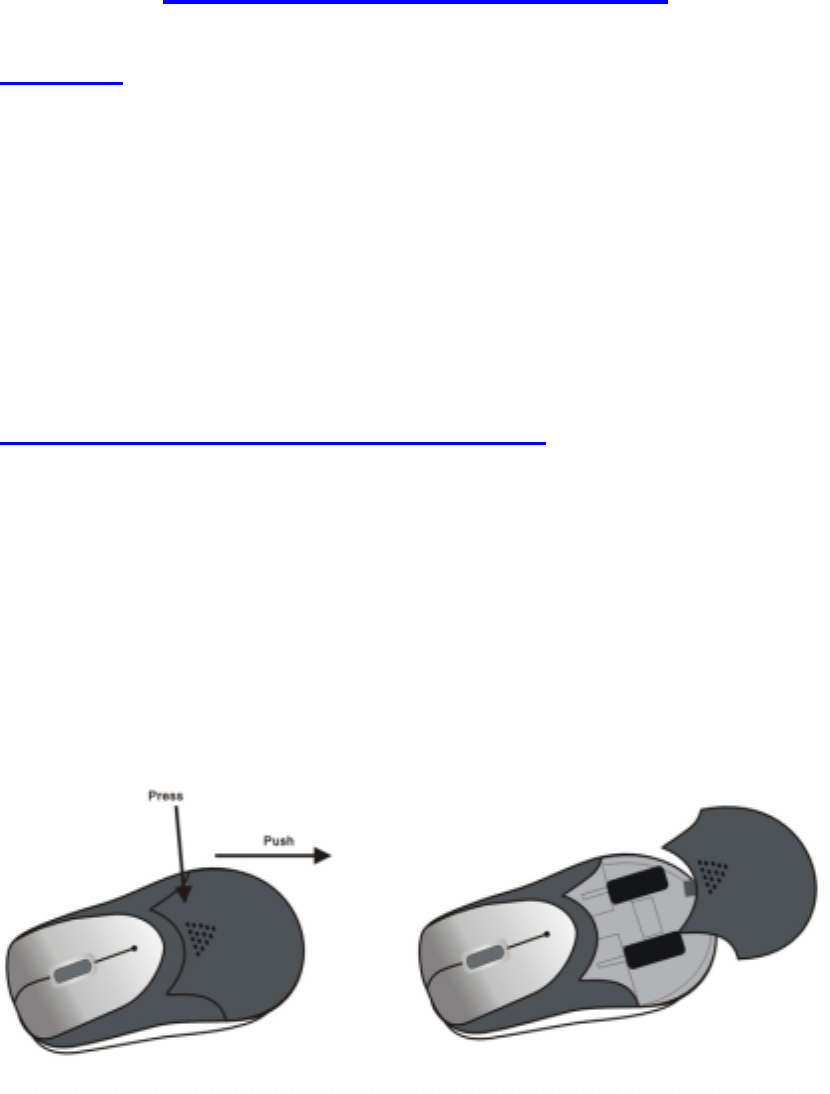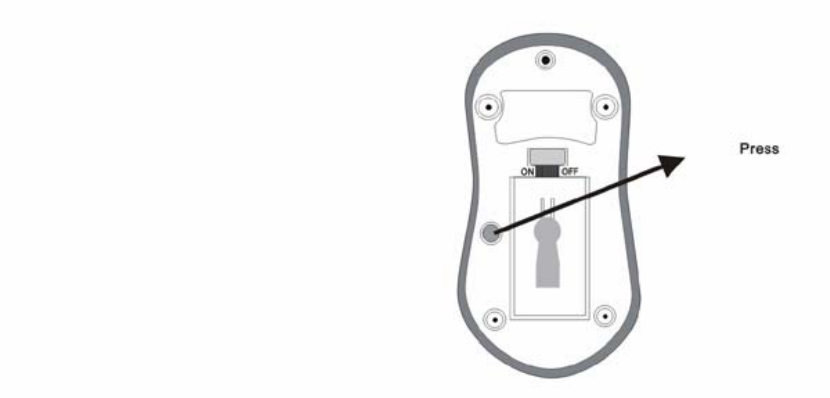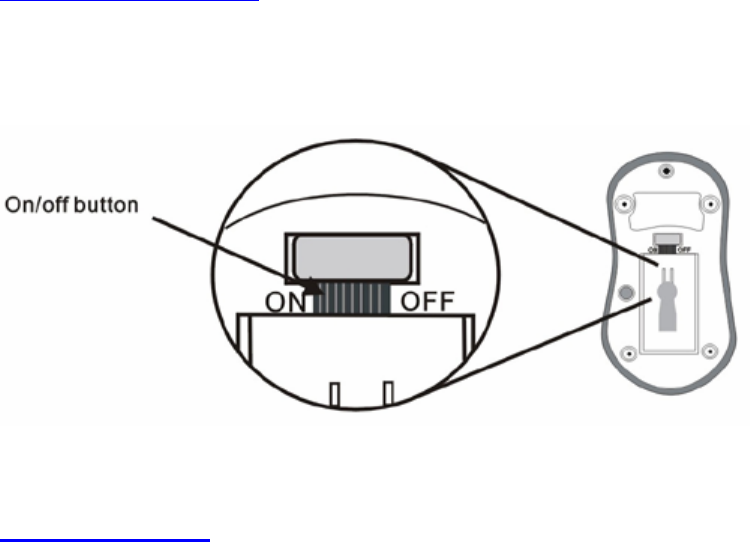Think Outside MSBT01-1 Bluetooth Wireless Mouse User Manual Manual
Think Outside, Inc. Bluetooth Wireless Mouse Manual
Manual

MSBT01 USER’S MANU
Welcome
Thank you for purchasing this BLUETOOTH Wireless Optical Mouse.
Utilizing the latest wireless technology. This mouse can work from
any directions or angles even when objects hinder between your
mouse & your BLUETOOTH enabled P.C., You can locate the device
freely and enjoy its convenience. And the working range between the
mouse and your P.C. are 10 meters.
Install your BLUETOOTH wireless mouse
Hardware Installation
Installing batteries
1. Remove the battery cover from the bottom of your mouse
2. Insert two AAA Alkaline batteries into the battery compartment.
3. Replace the cover carefully.
Once the battery is placed correctly in the mouse, the optical LED
located at the mouse bottom will light up.

PAIRING WITH YOUR P.C. (or BLUETOOTH Dongle)
Prior to using your BLUETOOTH mouse for the first time, you MUST
pair it with another BLUETOOTH device, such as a BLUETOOTH
enabled P.C.. The Bluetooth connection between the mouse and your
P.C. can be established by setting up a paired link. With a paired link,
the P.C. remembers the mouse’s ID, and these 2 items are then
‘paired’ together – eliminating the need to repeat the set up process
with future use. Only paired devices can utilize all the functions of
the mouse. The information below describes pairing instructions for a
typical device. For specific instructions, refer to your P.C. user guide.
1. Press the underneath button of the mouse, then the green LED is
turned on, and mouse is ready to be pairing with your P.C.
2. Select the BLUETOOTH function on your P.C., and following the
instructions of user’s guide to pair the mouse with your P.C..
3. Once the mouse has been paired with your P.C., then the green LED
of the mouse will be turned off, and then the mouse is ready to be
used with your P.C..

Power on-off function
This ON/OFF function is designed to save battery life. When mouse is
not in use, you may turn the battery switch off
Important Note
z Please avoid your BLUETOOTH optical mouse to work on a
metal surface. Metals such as iron, aluminum or copper
shield the radio frequency transmission and may slow down
the response of the mouse of cause the mouse to fail
temporarily.
z This BLUETOOTH mouse will enter power saving mode
automatically and if you don’t move the mouse for over 10
minutes then you may have to move the mouse a little bit to
re-start working
z Never use the BLUETOOTH mouse on a glass or mirrored
surface
z Always use Alkaline batteries ONLY. Do not mix used and new
batteries in one mouse.
z Using light color mouse pad is recommended.
Federal Communications Commission (FCC) Statement
15.21
You are cautioned that changes or modifications not expressly approved by the part
responsible for compliance could void the user’s authority to operate the equipment.
15.105(b)
This equipment has been tested and found to comply with the limits for a Class B
digital device, pursuant to part 15 of the FCC rules. These limits are designed to
provide reasonable protection against harmful interference in a residential installation.
This equipment generates, uses and can radiate radio frequency energy and, if not
installed and used in accordance with the instructions, may cause harmful interference
to radio communications. However, there is no guarantee that interference will not
occur in a particular installation. If this equipment does cause harmful interference to
radio or television reception, which can be determined by turning the equipment off
and on, the user is encouraged to try to correct the interference by one or more of the
following measures:
-Reorient or relocate the receiving antenna.
-Increase the separation between the equipment and receiver.
-Connect the equipment into an outlet on a circuit different from that to which the
receiver is connected.
-Consult the dealer or an experienced radio/TV technician for help.
Operation is subject to the following two conditions:
1) this device may not cause interference and
2) this device must accept any interference, including interference that may cause
undesired operation of the device.
FCC RF Radiation Exposure Statement:
This equipment complies with FCC radiation exposure limits set forth for an
uncontrolled environment. End users must follow the specific operating instructions
for satisfying RF exposure compliance. This transmitter must not be co-located or
operating in conjunction with any other antenna or transmitter.